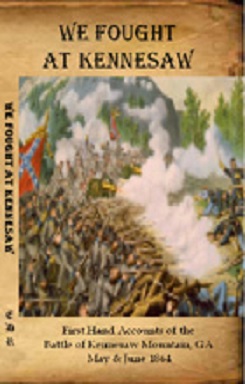BENJAMIN SMITH, SOLDIER, STATESMAN, PHILANTHROPIST.
Near the mouth of the beautiful Cape Fear river, on its right bank, is a pleasant little town. It is fanned by the delicious sea breezes; huge live oaks gratefully shade its streets. In its sombre cemetery repose the bodies of many excellent people. Its harbor is good. It is on the main channel of the river. From its wharves can be seen not far away the thin white line of waves as they break on the sandy beach. But the ships to and from its neighbor, Wilmington, pay little tribute as they pass and repass. Its chief fame is that it contains the court-house of the county of Brunswick. Its name is Smithville.
Opposite this good old town is a desert island composed of undulating sand hills, with here and there occasional green flats and dwarfed pines to relieve the general monotony. It is exposed to the full fury of the Atlantic storms. New Inlet once poured a rapid stream between the island and the mainland. But daring and industrious man seeks to force by walls of stone the impetuous floods through the river channel to the west, and thus float larger ships up the river to the port of Wilmington. Its southern end forms the dangerous cape which Mr. George Davis so eloquently describes:
"A naked, bleak elbow of sand
jutting far out into the ocean. Immediately in its front are the Frying Pan
Shoals, pushing out still further twenty miles to sea. Together they stand for
warning and for woe; and together they catch the long majestic roll of the
Atlantic as it sweeps through a thousand miles of grandeur and power, from the
Arctic toward the Gulf. It is the play-ground of billows and tempests, the
kingdom of silence and awe, disturbed by no sound save the sea-gull's shriek,
and the breakers' roar.
There it stands, bleak and
threatening and pitiless, as it stood three hundred years ago, when Greenville
and White came nigh unto death upon its sands. And there it will stand, bleak
and threatening and pitiless, until the earth and sea shall give up their dead.
And as its nature, so its name, is
The name of the sandy reach which I have described, so desolate, yet so full of interest, is Smith Island.
The University of North Carolina has amid its group of buildings, one, in its shape and portico and columns, imitating a Greek temple. Its basement was until recently the home of the State Agricultural Experiment Station, which has done so much to protect our farmers from frauds, but now is the laboratory of the professor of chemistry. Above is a long and lofty room containing the library of the University.
On its shelves are many ancient books of great value, but vacant spaces plead piteously for new books in all the departments of literature and science. The names of this building is "Smith Hall."
What member of the widely-spread family of Smiths has thus given his familiar name to a county town, an island, and a University Hall? His Christian name was Benjamin. He was an active officer of the Revolution and a Governor of our State, and the first benefactor of the University.
Governor Smith had many vicissitudes of fortune. In his youth he was aide-de-camp of Washington in the dangerous but masterly retreat from Long Island after the defeat of the American forces. He behaved with conspicuous gallantry in the brilliant action in which Moultrie drove the British from Port Royal Island and checked for a time the invasion of South Carolina. A Charleston paper of 1794 says, "he gave on many occasions such various proof of activity and distinguished bravery as to merit the approbation of his impartial country." After the strong Union superseded the nerveless Confederacy, when there was danger of war with France or England, he was made general of militia,

| Index - Contents |
 |

Wheeler, John H.
476 pgs.
HARDBACK - $75.00
PAPERBACK - $55.00
CD-ROM - $15.00
COMBO - $65.00
EBOOK - $15.00
Hardback, Paperback, CD-ROM or Ebook

Rigdon, John C., Editor
DVD - $35.00
DOWNLOAD - $20.00
COMBO - $50.00
DVD
|
| |||||
John C. Rigdon | |||||

|
|||||
| Ordering via EMAIL is easy. Click Here |
Orders may also be sent via U.S. Snail to:
Eastern Digital Resources
6219 Hillandale Rd.
Davenport, IA 52806








